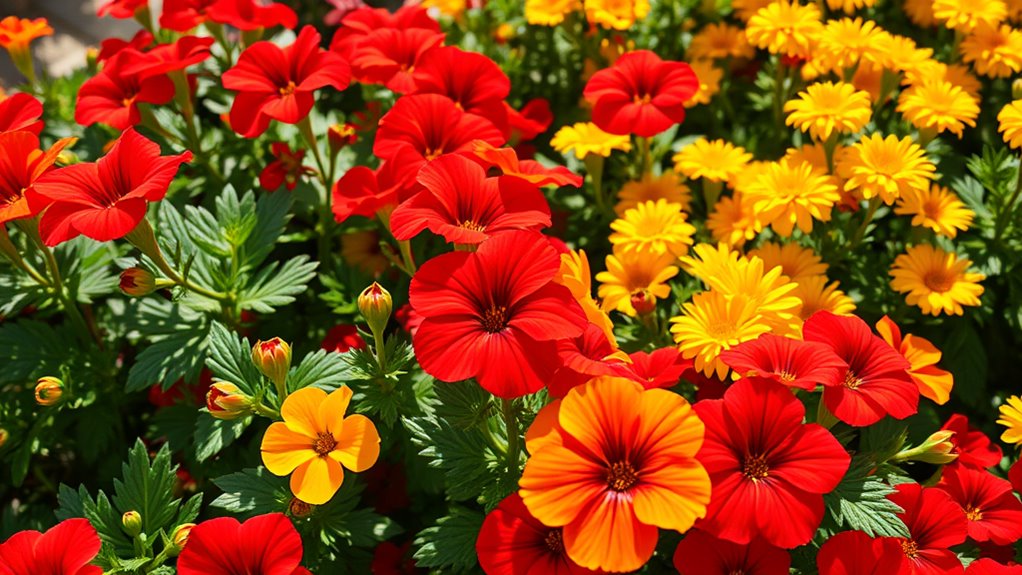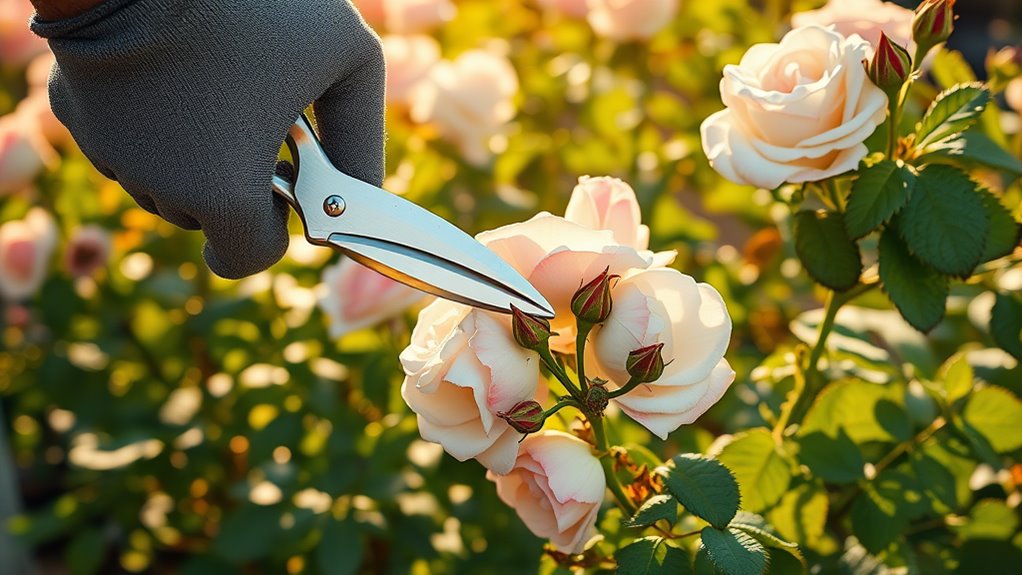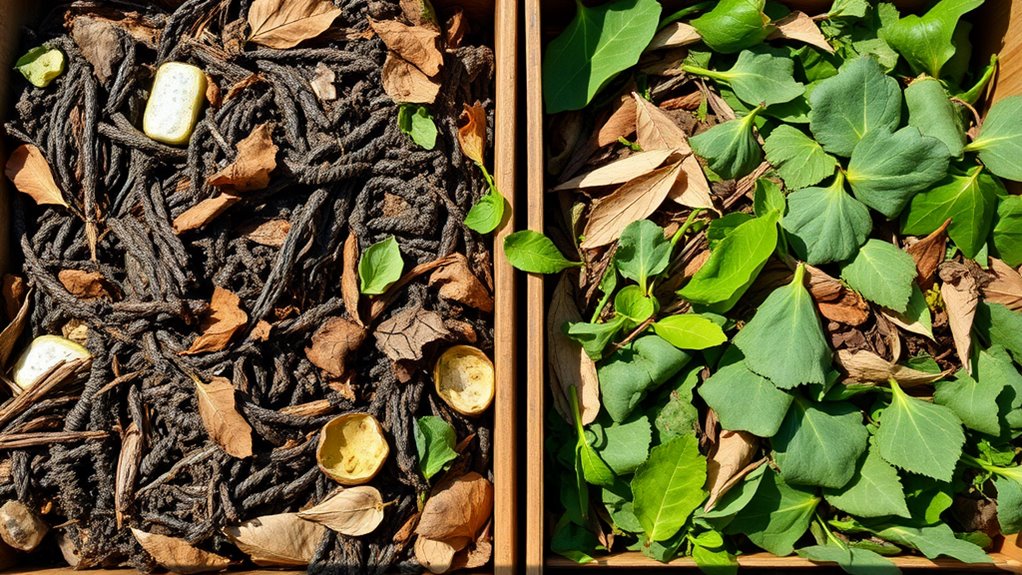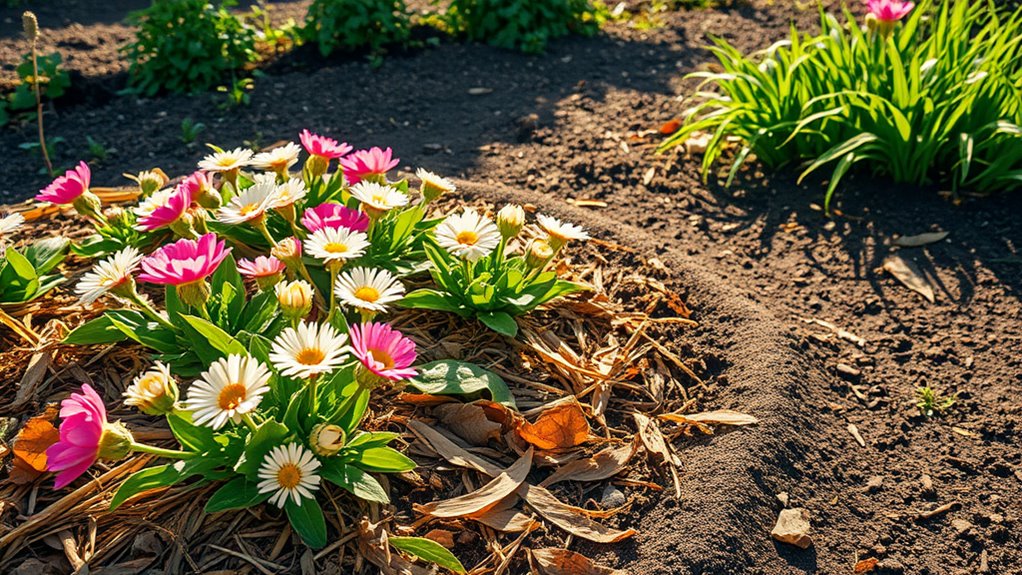I Only Deadhead My Flowers Once a Week – And It Works!
You’ve found that deadheading your flowers once a week keeps them thriving, and you’re absolutely right—it’s a smart, low-effort way to boost new blooms, prevent seed production, and maintain plant health by redirecting energy to growth. Choose repeat-blooming varieties like geraniums that suit your garden’s conditions, and use sharp pruning shears for clean cuts at the right time, like mornings or evenings, to avoid mistakes. Keep up this routine for a vibrant garden, and you’ll uncover even more tips to enhance your results.
Key Takeaways
- Weekly deadheading can effectively boost blooms and plant health by removing spent flowers promptly.
- Choose repeat-blooming varieties like geraniums that respond well to once-weekly maintenance.
- Use sharp tools for clean cuts to ensure each session promotes optimal growth and prevents disease.
- Time your deadheading in the morning or evening to minimize plant stress and enhance recovery.
- Avoid common errors, like overcutting, to make infrequent sessions sufficient for vibrant results.
Benefits of Weekly Deadheading
If you’re tending a garden, deadheading your flowers weekly boosts their health by encouraging new blooms, preventing seed production, and directing energy toward growth rather than fading parts. Moreover, this weekly routine offers time-saving benefits that allow for more efficient garden maintenance.
Efficient deadheading keeps your plants vigorous, as you swiftly remove faded flowers, minimizing disease risks and promoting a lush appearance.
You’ll enhance blooming cycles, ensuring continuous color and vitality without overwhelming effort. This practice channels nutrients effectively, fostering resilience against pests and environmental stress.
Additionally, this method leads to bigger blooms for enhanced garden vibrancy.
Choosing the Right Flowers
With deadheading boosting your garden’s vitality, you’ll choose flowers that suit your maintenance routine and thrive under regular care.
Start by assessing your garden’s conditions, like sunlight and soil, to select resilient varieties. Opt for repeat-blooming perennials such as geraniums, salvias, or daylilies, which respond well to weekly deadheading by producing more flowers. Additionally, consider flower bed designs to arrange these plants effectively for an enhanced garden layout.
Avoid finicky types that fade quickly; instead, pick those with prolific blooming cycles and easy-to-spot spent blooms. This ensures your once-a-week effort keeps plants healthy, encouraging vibrant growth without extra demands.
Focus on local climate compatibility for long-term success.
To extend the benefits of your weekly deadheading routine, consider plants that support year-round blooms for a continuously vibrant garden.
Essential Tools for Deadheading
To deadhead flowers efficiently, you’ll need a few key tools that make the process quick and precise. These essentials help you work safely and effectively, minimizing effort while protecting your plants. Additionally, incorporating essential pruning techniques can further boost your garden’s growth by promoting healthier and more vigorous plants.
Here’s a breakdown of must-have tools to enhance your gardening routine:
| Tool | Description | Benefits |
|---|---|---|
| Pruning Shears | Sharp, handheld cutters | Enables clean, accurate cuts |
| Gardening Gloves | Durable, thorn-resistant wear | Protects hands from injury |
| Small Bucket | Portable container for debris | Keeps workspace organized |
| Sharp Knife | Precision blade for fine work | Handles delicate stems easily |
| Micro Scissors | Compact, fine-tipped shears | Ideal for small flowers |
Choose tools that fit your garden’s needs for best results. Incorporating these tools into your routine can help you master the art of pruning for thriving gardens. (Word count: 99)
Simple Steps to Deadhead Effectively
You identify dead blooms by checking for wilted or faded flowers on your plants.
Once you’ve spotted them, you remove the spent flowers with a clean cut at the stem’s base.
This approach keeps your garden thriving and encourages new growth. Essential flower care hacks like this can enhance the flowering period and promote more vibrant blooms.
By incorporating this weekly routine, you can unlock the secret to thriving and lasting blooms.
Identify Dead Blooms
Identifying dead blooms is key to effective deadheading. You start by inspecting your flowers regularly, focusing on visual cues.
Look for petals that have lost their bright color, appearing faded or dull. Check if they’re dry, brittle, or starting to drop naturally.
Examine the flower’s center; if it’s shriveled or discolored, that’s a sign. Also, note any browning on the stem near the bloom, indicating it’s past its prime.
Remove Spent Flowers
Removing spent flowers revitalizes your plants and boosts blooming. Gather sharp, clean pruners or scissors first.
Spot the faded bloom and trace the stem to the nearest leaf node or bud. Cut just above that point at a 45-degree angle to promote healing and new growth.
For soft-stemmed plants like petunias, pinch off the spent flower with your fingers instead. This redirects energy from seeds to fresh blooms.
Dispose of clippings to avoid pests. Deadhead weekly for best results, keeping your garden vibrant and healthy.
Always sanitize tools to prevent disease spread.
Signs Your Flowers Need Attention
How can you spot the signs that your flowers need attention? It’s about watching for subtle cues that show your plants are struggling, so you can act quickly and keep them vibrant. To enhance your gardening success, remember that overwatering risks can exacerbate these signs by causing root damage.
-
Wilting blooms: You’ll see petals drooping sadly, signaling thirst or exhaustion that tugs at your heart as a gardener.
-
Faded colors: Those once-bright hues turning dull might make you feel disappointed, urging you to nurture them back to life.
-
Pest damage: Spots or holes from invaders can evoke frustration, reminding you of the battle to protect your floral friends.
-
Stunted growth: If new buds aren’t emerging, it stirs a sense of urgency, motivating you to revive your garden’s joy.
By addressing these signs promptly, you can help avoid common mistakes that often lead to bigger problems in your garden.
Common Errors in Deadheading
While spotting signs of struggling flowers helps you act, common errors in deadheading often lead to unintended damage. You might cut stems too short, removing growth points and weakening the plant, so always snip above a leaf node. Moreover, overcrowding plants is another frequent gardening mistake that can reduce air flow and increase disease risk.
Another mistake is using dull tools, which crush stems and invite disease—opt for sharp shears instead.
Don’t overlook timing; deadheading wet flowers spreads fungi, so wait for dry conditions.
Also, avoid removing healthy buds by mistake; inspect closely to target only faded blooms.
These pitfalls, when avoided, keep your garden thriving efficiently.
Additionally, to enhance your overall gardening success, it’s wise to learn about common mistakes highlighted in broader flower gardening advice.
Results From a Weekly Routine
When you commit to a weekly deadheading routine, you’ll notice your garden transforms quickly, with plants producing more blooms, extending their flowering season, and maintaining stronger overall health.
This approach encourages vigorous growth and resilience, making your space more vibrant and rewarding.
-
Revel in the joy of witnessing your flowers burst into unexpected new colors, reigniting your passion for gardening.
-
Savor the pride that swells as your plants thrive against the odds, turning your yard into a personal triumph.
-
Embrace the excitement of daily surprises, where each bloom feels like a heartfelt thank-you from nature.
-
Find comfort in the serenity your flourishing garden brings, easing stress and fostering a deeper connection to your outdoors.
Optimal Times for Deadheading
You can maximize your deadheading results by timing it right, starting with mornings when plants are cooler and less stressed.
You’ll avoid midday heat by deadheading early, which helps promote healthier growth.
Evening sessions work well too if you’re aiming to minimize pest disturbances on specific flowers.
Morning Deadheading
Deadheading your flowers in the morning captures the day’s cooler temperatures, which help prevent plant stress and promote faster healing of cut stems.
This approach minimizes damage and boosts your garden’s vitality, letting you maintain a thriving display with ease.
-
Revel in the fresh morning air, as it heightens your connection to nature and sparks daily joy.
-
Witness rapid plant recovery****, evoking a sense of accomplishment and pride in your careful efforts.
-
Embrace the serene routine, turning deadheading into a peaceful ritual that soothes your mind.
-
Savor the vibrant results****, igniting happiness as your flowers flourish under your attentive touch.
Evening Timing
While morning deadheading leverages cooler starts, evening timing lets you capitalize on the day’s waning heat, reducing plant stress and encouraging overnight recovery for a more resilient garden.
You’ll find that deadheading in the late afternoon or early evening, when temperatures drop, minimizes water loss and promotes faster healing. Choose a time after peak sun—around sunset—to avoid wilting risks.
Actively remove faded blooms with clean shears, focusing on perennials like roses, and watch your plants rebound stronger by morning. This routine boosts blooms without overwhelming your schedule.
Additional Maintenance Practices
Beyond deadheading, you’ll find that regular watering and fertilizing form the backbone of effective flower maintenance, helping to promote healthy growth and vibrant blooms.
Don’t overlook mulching to retain moisture or pest checks to keep plants thriving. These practices ensure your garden flourishes with minimal effort.
-
Feel the joy of watching your flowers perk up after a deep, consistent watering session that quenches their thirst and boosts resilience.
-
Experience pride in nourishing soil with balanced fertilizer, turning wilting leaves into lush, colorful displays that reward your care.
-
Savor satisfaction from applying mulch, which not only conserves water but wraps your garden in a protective embrace against harsh elements.
-
Embrace contentment through routine pest inspections, shielding your blooms from threats and preserving the peace of a healthy oasis.
Comparing Weekly and Frequent Deadheading
When you choose frequent deadheading over a weekly approach, you’re encouraging more prolific blooms by promptly removing spent flowers. This method boosts plant energy for continuous flowering, but it demands more time and attention. In contrast, weekly deadheading, like my routine, keeps gardens healthy with less effort, making it practical for busy lives.
| Aspect | Weekly Deadheading | Frequent Deadheading |
|---|---|---|
| Frequency | Once a week | Multiple times weekly |
| Time Investment | Low | High |
| Bloom Results | Steady and reliable | Abundant and vigorous |
| Effort Level | Minimal | Intensive |
| Best For | Time-strapped gardeners | Bloom-focused enthusiasts |
Ultimately, you balance effort and rewards to suit your schedule, ensuring thriving flowers.





